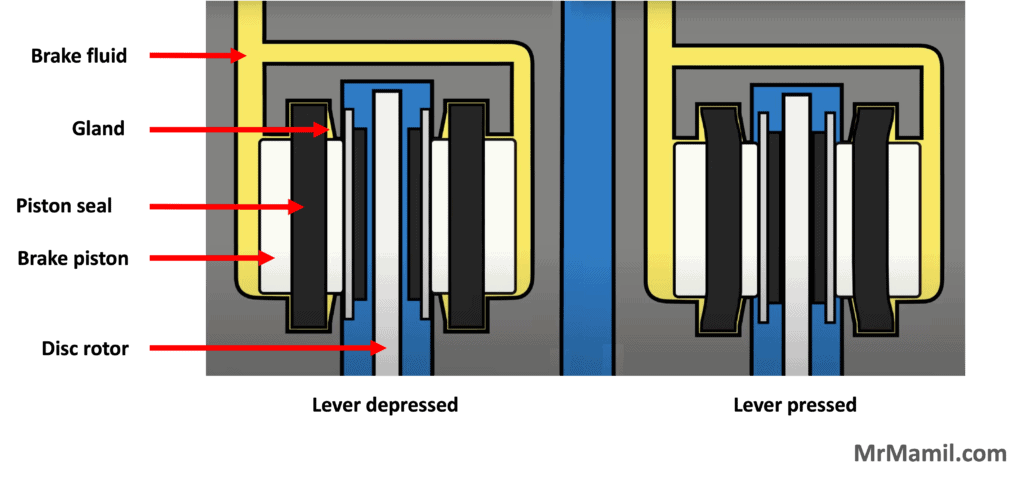This guide provides step-by-step instructions on cleaning your hydraulic disc brake pistons.
Are your disc brakes experiencing any of the following?
- Sticky levers
- Brake pistons not retracting or going back in
- Stucked pistons
- Uneven brake pads wear
- Squealing and rubbing
The above are signs that the brake pistons are dirty and need a thorough cleaning. Each time you engage the brakes, the constant rubbing between the brake pads and disc rotors will lead to pad deposit buildup around calipers. Over time, this will lead to a sticky brake piston.
How hydraulic disc brake pistons work

The rubber seal is a critical part of the brake caliper. It has a square edge and wraps around the piston. Each time you pull the brake lever, the brake fluid compresses and pushes the pistons towards the brake pads and rotors.
The seal flexes into a small gap called the gland, which allows the piston to move. It also acts as a spring for the brake piston to reset to its original position when you release the brake lever.
Over time, the seals get contaminated, leading to a sticky disc brake.
How to clean disc brake pistons
Things needed
- Cotton swabs
- Hydraulic brake fluid (use the same oil as your brake fluids)
- Isopropyl alcohol
- Clean rag
Step 1. Remove the brake pads
Remove the safety pin on the retaining bolt. Then remove the retaining bolt. Pull out the brake pads.
Step 2. Expose the brake pistons
Gently pump the brake levers to pull out the pistons. Be careful not to overdo this to push the pistons out and spill the brake fluids.
If the pistons are uneven (one side is moving out more than the other), use a brake piston tool (eg: Park Tool PP-1.2) to limit its movement while you pump to expose the stickier piston.
Step 3. Clean with brake fluid
Use the same brake fluid that is in the brake system. Shimano Disc Brake Mineral Oil, DOT for SRAM, and red mineral oil for Campagnolo.
Pour a little (approximately ½ fl. Oz. / 10ml) into a cup. Dab the cotton swab with the brake fluid.
Clean around the pistons thoroughly. Replace the cotton swab when it gets dirty.
Repeat for the other side.
Step 4. Reset the pistons
Use a brake piston tool (eg: Park Tool PP-1.2) and gently push the pistons back to their initial position. Alternatively, you can use a tire lever if you don’t have the tool.
You’ll need some patience, and the pistons don’t usually reset on the first attempt.
Step 5. Clean the brake caliper
Spray a generous amount of isopropyl alcohol around the inside and outside of the brake caliper. Wipe with a clean rag.
Step 6. Realign the brake caliper
Insert the wheel and spin it. Pump the brake lever to allow the pistons to move to their natural position.
If there is a brake rub, slightly loosen the brake caliper screws, spin the wheel, and press, then release the brake lever. This will center the brake caliper.
If the brake rub is still present, repeat 2 to 3 times more. As a last resort, use your hands to center the brake calipers.
Tighten the brake caliper screws once there is no more brake rub.
